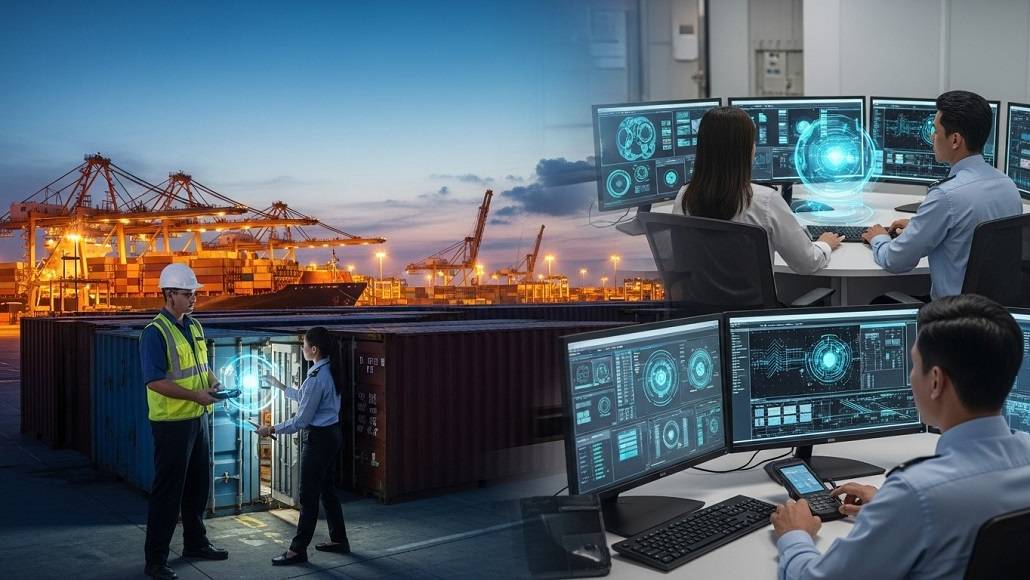As technology alters how people get around the world, executives are putting cybersecurity in linked terminal settings at the top of their to-do lists. Today, airports, seaports, and intermodal logistics hubs are like large, digitally connected ecosystems that rely on a web of SCADA systems, IoT devices, networks for managing passengers and cargo, and data exchanges that are getting more and more intricate. These changes to how things work make them run more smoothly and provide us additional options for services. But they also put terminals at danger in a cyber security landscape that is developing swiftly, where physical and digital threats are closely intertwined and the risks of downtime and data loss are higher than ever. In the Asia-Pacific region, where digital transformation and cross-border data flows are moving at breakneck speed, these forces coming together make a strong cybersecurity posture not only a technological imperative, but also a critical aspect of operational resilience and global competitiveness.
Keeping SCADA, IoT, and Airside Networks safe, all of which are connected
The biggest difficulty with cybersecurity in linked terminal setups is keeping the terminals’ complex, interdependent systems safe. SCADA systems are still the most significant aspect of automating major infrastructure. They are in charge of everything from checking in luggage and taking care of buildings to fuelling and lighting on airport aprons. According to 2023 research from the World Economic Forum, SCADA-derived technology is used in the operations of 97% of airports around the world. Most of these airports additionally connect these platforms to IoT networks and advanced analytics to make their operations more effective in real time.
But in some respects, this digital convergence has made things less safe. In 2021, the European Union Agency for Cybersecurity claimed that cyberattacks on industrial control systems in the transportation sector had gone up by 43%. A lot of these attacks used weaknesses in older SCADA systems that don’t have good encryption, segmentation, or patch management. Airports in the Asia-Pacific area have quickly updated their digital infrastructure, so they often use a combination of old and new technologies, which makes the risk even higher. The ransomware attack on India’s SpiceJet in 2022, which affected both the airside and the landside, highlighted how a single point of failure may propagate via tightly connected networks, causing delays and hurting customer trust.
The Internet of Things (IoT) has grown, which has made the attack surface much broader. There are tens of thousands of linked gadgets at an average international terminal today. These include smart CCTV cameras, environmental sensors, automated check-in kiosks, and baggage trolleys with Wi-Fi. Cybercriminals can get in through any node. According to Cisco’s 2023 Annual Internet Report, the transportation industry will have more than 7.5 billion IoT connections by 2025. The digital twin project at Changi Airport links up more than 10,000 IoT devices. This means that operations have to always watch for threats, check gadgets, and look for strange things.
Combining airside networks, which include communications between planes on the ground, fuelling, and managing gates, with digital passenger services has also made it harder to see where the security lines used to be. It is now thought that every terminal operator who cares about cybersecurity in linked terminal environments should partition these networks, use zero-trust designs, and set up stringent monitoring and response systems.
How to Deal with Cyber Risk in Passenger and Cargo Flows
It is more difficult to keep linked terminal settings safe because people and items are often moving around. Threat actors searching for personal information or trying to disrupt operations see passenger service systems like biometric e-gates, mobile boarding cards, and contactless payments as obvious targets. The Airports Council International’s 2023 Cybersecurity Report says that 89% of large airports had at least one security incident in the last two years that disrupted the flow of passenger data. Some of the most prevalent ways this happened were phishing, ransomware, and stealing data.
These kinds of breaches have huge implications. A cyberattack on the passenger reservation system at San Francisco International Airport in 2020 put the personal information of more than 380,000 travellers at risk. The tragedy caused a full overhaul of the standards for network monitoring and encryption. It also revealed how easy it is for attackers to break into the sector as they became smarter and more persistent. The danger surface keeps getting broader as terminals utilise AI and machine intelligence more and more to make it easier for passengers to get through. This means we need new ways to keep an eye on things in real time, respond fast to problems, and safely share data between platforms.
Cargo terminals suffer the same issues. The ransomware attack on HMM, the ninth largest container shipping company in the world, in 2021 forced terminal operations to stop for a week, which delayed thousands of shipments. The International Maritime Organisation warns that these kinds of cyber-attacks might cost more than $300,000 an hour in direct damages, not counting the effects on the economy and supply chains as a whole. Now, customs clearing systems, automated cranes, and RFID-enabled tracking all work together. This means that a problem in one area could hurt trade all across the world.
Top terminals are adopting multilayer security methods like real-time behavioural analytics, end-to-end encryption, and tight access controls to deal with these shifting concerns. Ongoing training for personnel and sharing information about threats across the public and private sectors help make these things happen. The International Air Transport Association (IATA) and the International Maritime Organisation (IMO) have both made new guidelines that underline how important it is to manage cybersecurity as a whole in order to keep operations moving and gain international certification.
Data management across borders in terminals in the Asia-Pacific region
Asia-Pacific’s terminal settings are at the forefront of digital change, but their unique political and legal situation has a huge effect on how secure linked terminal environments are. The Asian Development Bank says that the region’s terminals are essential places for moving people and cargo around the world. They take care of more than 35% of the world’s container traffic and more than 3.5 billion air travellers every year. As data-driven technologies become more crucial to terminal operations, it is even more important to find ways to maintain cross-border data transfers safe and legal.
Different countries in the Asia-Pacific region are making progress at different rates when it comes to handling data. Singapore’s Personal Data Protection Act (PDPA) is the best in the world since it mandates unequivocal consent, strong encryption, and hefty consequences for not obeying the regulations. China’s Personal Information Protection Law (PIPL) makes limits about where people can live tougher. It specifies that sensitive information that is gotten in China must stay there until the government approves it can be moved. Japan, South Korea, and Australia have all come up with their own solutions to protect key information infrastructure and share passenger or cargo data between countries.
It’s hard to follow the regulations when they are all over the place, and this makes it more likely that problems will happen in the firm. Different rules regarding sharing data, reporting issues, and encrypting data can make it harder to employ new terminal technologies, especially those that involve cloud-based analytics or multinational platforms for working together. To bring together the finest practices and stimulate cross-border cooperation on data security, the Cyber Security Agency of Singapore has established the ASEAN-Singapore Cybersecurity Centre of Excellence.
For terminal operators, the message is clear: strong privacy-by-design principles, tight data localisation, and ongoing regulatory monitoring must be the basis for their cybersecurity in linked terminal environments. Those terminals that can safely do business in the Asia-Pacific’s fast-paced, high-stakes market will be the ones who make sensible investments in compliance tools, legal guidance, and international partnerships.
Conclusion: Terminals need cybersecurity for strategic reasons.
Cybersecurity is more crucial than ever in networked terminal workplaces since everything is connected, automated, and based on data. It’s no longer just a matter of technical or operational issues to protect SCADA, IoT, and airside networks; manage cyber risk throughout passenger and cargo flows; and deal with the intricate world of cross-border data governance. If a terminal operator wants to preserve trust, resilience, and global relevance, they are now strategic must-dos.
The Asia-Pacific region is still at the forefront of new digital terminal technology. Companies that put money into solid cybersecurity systems, trained people, and the ability to change with the rules will be the best at running their businesses. Executives and stakeholders have a clear choice: make cybersecurity a top priority in linked terminal settings or leave themselves susceptible to assault in a world where even the most modern terminals can be shut down by digital compromise.












